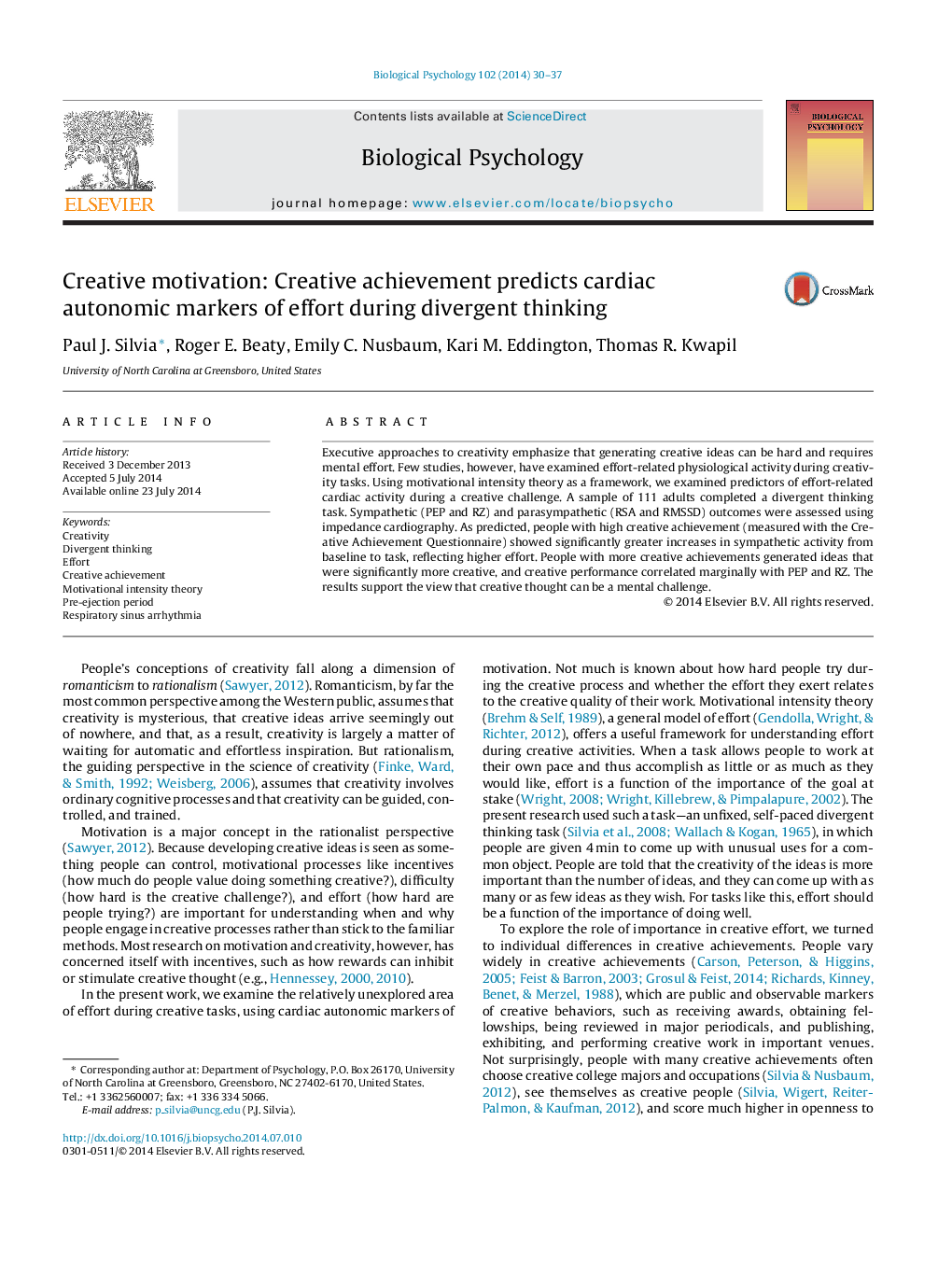| Article ID | Journal | Published Year | Pages | File Type |
|---|---|---|---|---|
| 920842 | Biological Psychology | 2014 | 8 Pages |
•Effort during creative problem solving has received little attention.•People worked on a divergent thinking task (unusual uses for a brick).•Effort-related autonomic activity was measured using impedance cardiography.•People with high creative achievements showed higher effort during the task.•The effects were limited to sympathetic outcomes (PEP and RZ).
Executive approaches to creativity emphasize that generating creative ideas can be hard and requires mental effort. Few studies, however, have examined effort-related physiological activity during creativity tasks. Using motivational intensity theory as a framework, we examined predictors of effort-related cardiac activity during a creative challenge. A sample of 111 adults completed a divergent thinking task. Sympathetic (PEP and RZ) and parasympathetic (RSA and RMSSD) outcomes were assessed using impedance cardiography. As predicted, people with high creative achievement (measured with the Creative Achievement Questionnaire) showed significantly greater increases in sympathetic activity from baseline to task, reflecting higher effort. People with more creative achievements generated ideas that were significantly more creative, and creative performance correlated marginally with PEP and RZ. The results support the view that creative thought can be a mental challenge.
